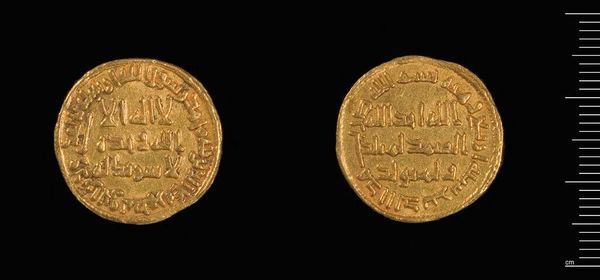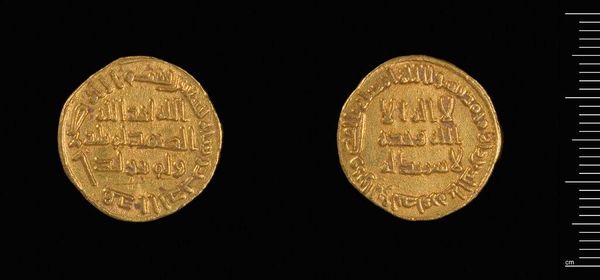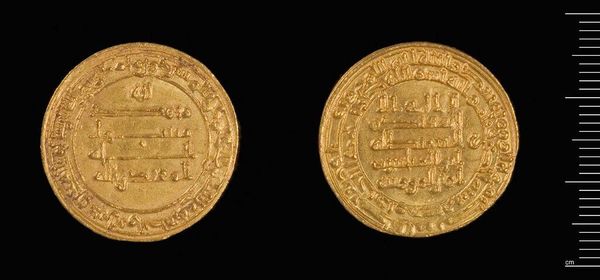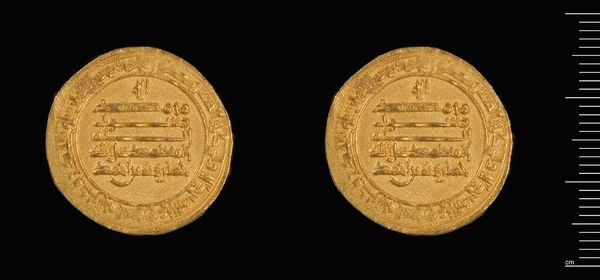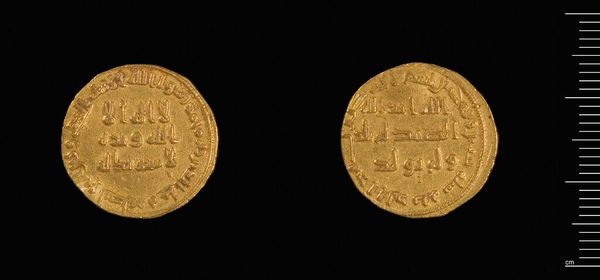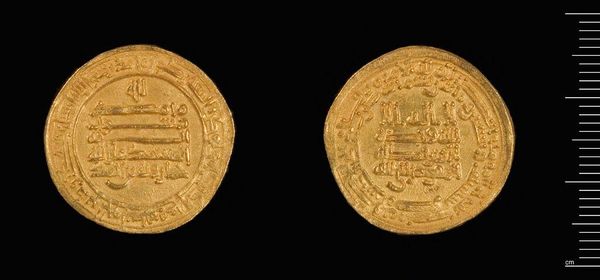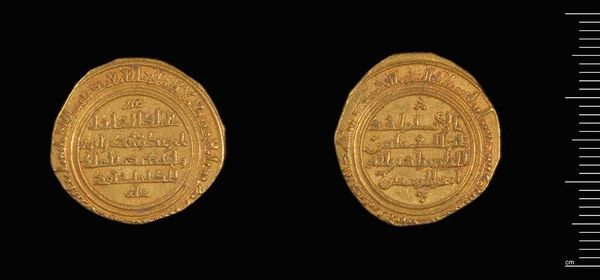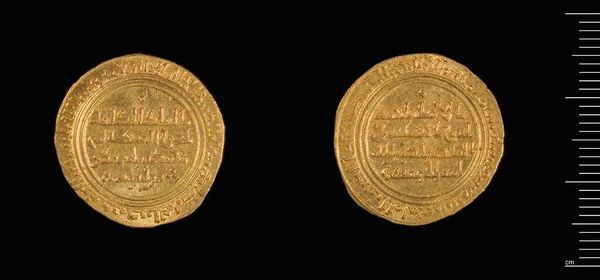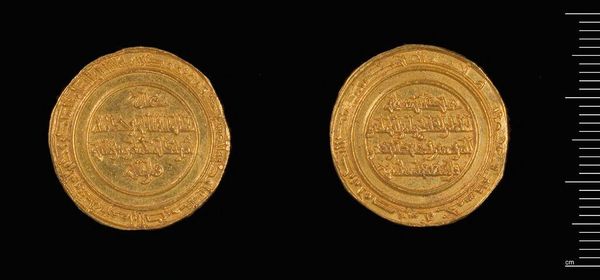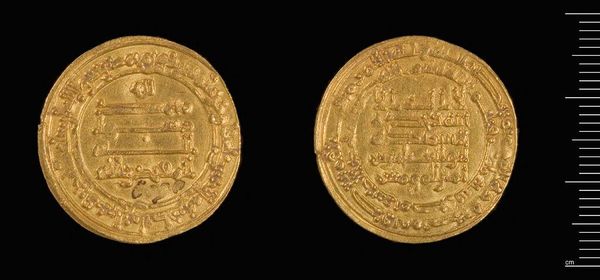
Dimensions: 4.28 g
Copyright: CC0 1.0
Curator: Here we have a Dinar of Marwan II, currently residing at the Harvard Art Museums. Editor: The immediate impression is that of concentrated power, a small object made of dense, precious material. Curator: Absolutely. We must consider the historical context of its production: the Umayyad Caliphate under Marwan II, a period marked by political instability and rebellion. The coin served not only as currency but also as propaganda, asserting Marwan's authority through inscriptions and imagery. Editor: I agree, and the material speaks volumes. The choice of gold, the weight of 4.28 grams – these weren't arbitrary. They reflect the economic power and trade networks necessary to acquire and mint such coinage, legitimizing his rule. Curator: Indeed. The inscriptions, while seemingly religious, are ultimately about solidifying Marwan's claim to leadership within a complex socio-political landscape. Editor: It’s a fascinating study in miniature, revealing so much about the material conditions of power. Curator: Precisely, it provides insight into the intersection of economics, politics, and identity in the early Islamic world.
Comments
No comments
Be the first to comment and join the conversation on the ultimate creative platform.
